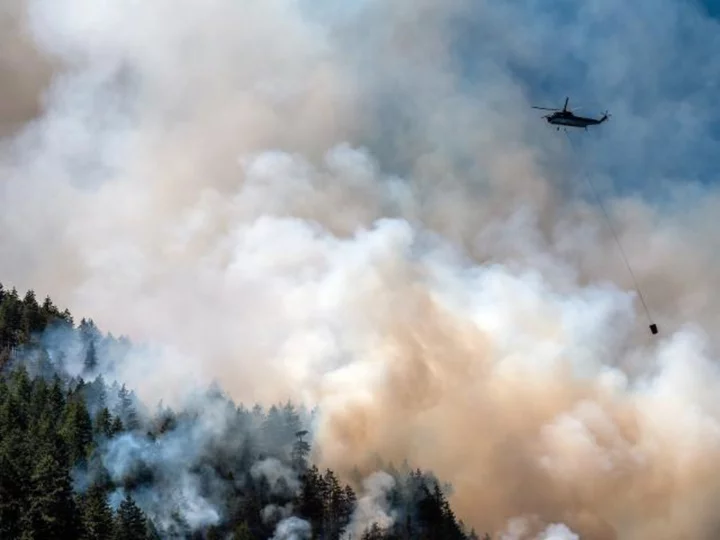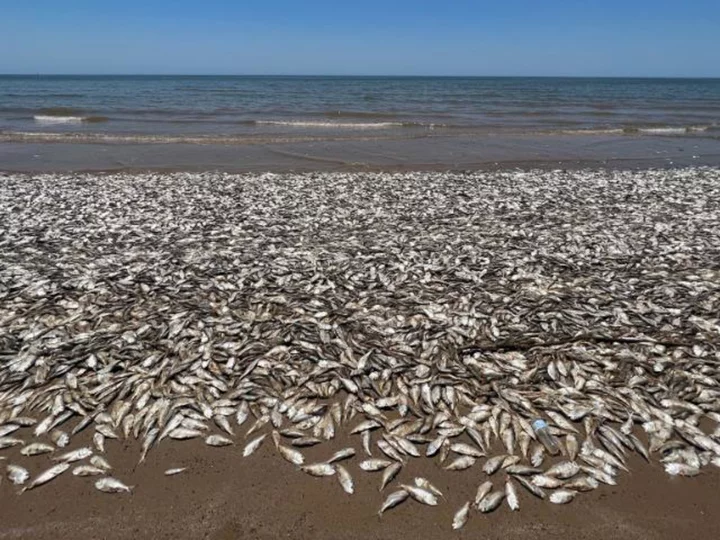As the river Meuse winds its way from France toward Netherlands, it cuts through an eastern Belgian province of Limburg where hunks of metallic machinery noisily dredge up 900 tonnes of gravel per hour. The gravel from the ancient river bed then travels on a mile-long rubber belt to be piled into vast mounds which are transported for making cement and other materials in one of the wealthiest corners of Europe.The Steengoed Projecten cvba gravel extraction plant in Limburg is not a snapshot of industrialization. It’s instead the epicenter of the largest nature restoration project in Europe, and one that could shine a light for others to follow. Part of a 30-year-old plan to return a 60 kilometer (37 miles) stretch of the Meuse river to its natural state, the project has already achieved 80% of its target by re-wilding about 2,000 hectares — roughly two-thirds the size of Brussels — according to Katrien Schaerlaekens, coordinator of the River Park Meuse Valley.
This river restoration project can serve as a model for what the European Union’s Green Deal wants to achieve through a new and controversial law, according to the backers of this legislation. Aiming to return at least 20% of land and sea back to its original state, the Nature Restoration Law has become a flashpoint for climate activists and its critics.The EU lawmakers will vote on this law on Wednesday in what’s likely to be a knife-edge decision. Its opponents, including the center-right European People’s Party that is the largest faction in parliament, say the law threatens food security and can stoke inflation. Supporters say climate emergencies are already doing that.
“Sometimes I feel a bit like Yeats in 1919, when he said the center cannot hold,” bloc’s climate chief Frans Timmermans said in an interview, referring to a W.B. Yeats poem about political factions Europe after World War One. “If the center-right moves in the direction of climate skepticism, then we are going to be in trouble.”
As the EU heads into elections next year, the fear is that the political divisions over nature restoration could thwart one of the pillars of a landmark green deal in a continent that has been ahead of the world in climate change policies. The 2019 plan calls for retooling every industry through dozens of pieces of separate legislations for the 27-nation bloc. Read More: ‘Culture Wars’ Are Risking Paralysis of Europe’s Green Deal
With low-hanging fruit already picked, the Green Deal now needs to focus on the most difficult and politically sensitive areas, such as agriculture. And the asks under Nature Restoration Law on land use have begun running into opposition from farmers, a powerful voting lobby in the EU.
Belgium — home to the EU’s institutions — is a microcosm of these political divides. It has powerful farming interests, which across Europe have for decades been able to effectively lobby political leaders, and at times, undermine them. Flanders, the Dutch-speaking Northern half of the country, is almost half agricultural land, just like the rest of EU.
The law’s opponents argue that intense competition for land makes it impossible to implement what the European Commission wants. Also, it’s not clear what new money the EU can provide to pay farmers for their lost farm land in the new law.
A hectare of agricultural land in Flanders costs more than €60,000 ($65,727) and about 170,000 hectares — a quarter of the total — would be lost to nature restoration, according to Lode Ceyssens, chairman of the regional farming lobby Boerenbond. His farmers, like those in the Netherlands, are still grappling with the fallout from EU rules on nitrogen 30 years ago. The new rules will add crippling costs, he said.
“This nature restoration law will cause an even bigger crisis in Flanders,” Ceyssens said. “The EU didn’t calculate what the consequences will be and they haven’t provided money. I don’t see any compensation at this moment.”
Read More: Angry Rebel Farmers Have Become the World’s Latest Climate Enemy
The environmental activists, including WWF, have labeled the figures from farming lobbies and center-right politicians as “scaremongering” and “myths.” The European Commission has tried to assure farmers that the new rules will help them better adapt to climate change. A restored natural environment will also nurture bees and other pollinators that are so vital to crop yields.
When EU policymakers get down to voting on the Nature Restoration Law in Strasbourg on Wednesday, the law’s proponents can point to the Meuse valley, 100 kilometers east of Brussels, and the rare insights it offers on how it’s possible for environmentalists, farmers and heavy industry to work together without losing sight of profits. Read More: Europe’s Green Transition Under Attack as Political Costs RiseWhen tough new regulations in Belgium in the early 1990s nearly heralded the end of the gravel industry, the privately-owned plant reached novel agreements with local authorities to restore the Meuse to how it would have looked before the industrial revolution.The policymakers were likely spurred into action after witnessing the massive damage caused by two major floods in 1993 and 1995, according to Schaerlaekens who overseas the project in the area.
The gravel pit’s recipe is simple: it either directly buys farmers’ land along the banks of the river for an above-market rate, or offers them farmers parcels of land further inland. It then extracts gravel for up to 20 years. Once done, it flattens the river bank and lets it be, allowing nature to reclaim it.
The payoff has been the birdsong, wild flowers along the river bank, roaming Galloway cattle and Konik horses in the former gravel pits. Not to mention the profit from extracting millions of tons of gravel and sand for Steengoed. Even though annual production has fallen from 9 million tons in the 1990s to around 1.5 million tons, Frank Liebens, the director of the gravel pit, is happy with how things stand.
“I’m convinced that this level of restoration is the only way,” he said. “Until the 1990s, we weren’t friends with the people trying to restore nature. Now we are friends with even the most hard-line greens.”
But Meuse river’s restoration relied on several symbiotic factors. A set of local policymakers who were willing to sign off on such contracts. The luxury of time — 30 years since it was first conceptualized. An industry — gravel extraction — that was unique in its ability to help in the re-wilding of an area. Read More: Europe’s Climate Momentum Under Threat as Bloc Votes on Key Bill
Those factors may be hard to replicate across different geographies in the EU or scale up to the level that the new law seeks. It’s also unclear if other industry sectors can contribute to restoration and simultaneously profit, signaling the tough road ahead for the Green Deal’s latest piece of legislation.
The ferocity of the debate has led the bloc’s climate chief Timmermans to proclaim that climate policy is entering the “culture wars,” amid accusations of threats and manipulation between him and those in the center-right.
If rejected by the parliament, it would be the first Green Deal legislation to face a serious risk of being scrapped. It’ll also signal challenges ahead in enacting a biodiversity pillar which the commission says is necessary to meet the bloc's ambitious climate goals. If accepted, it would recast the landscape of the continent at a time when heat records are getting shattered globally.“No nature restoration would make it almost impossible to reach our climate goals,” Timmermans said.









